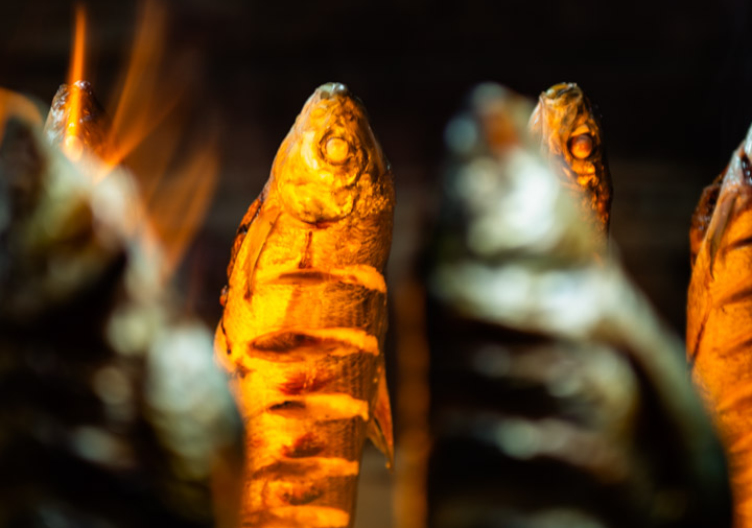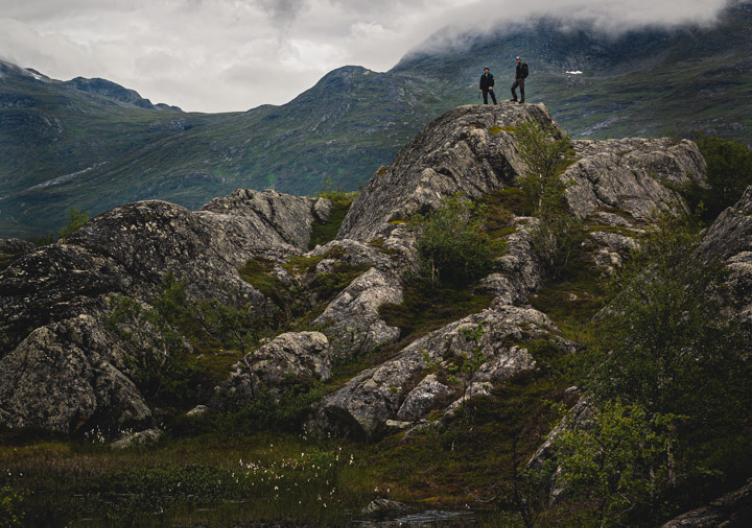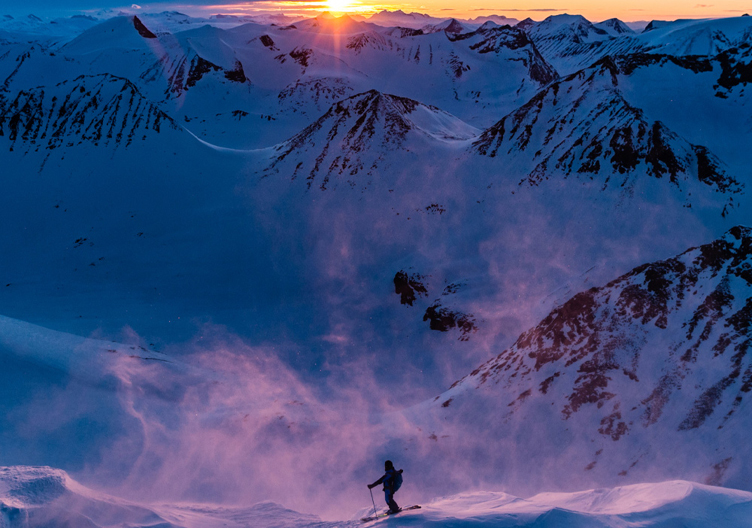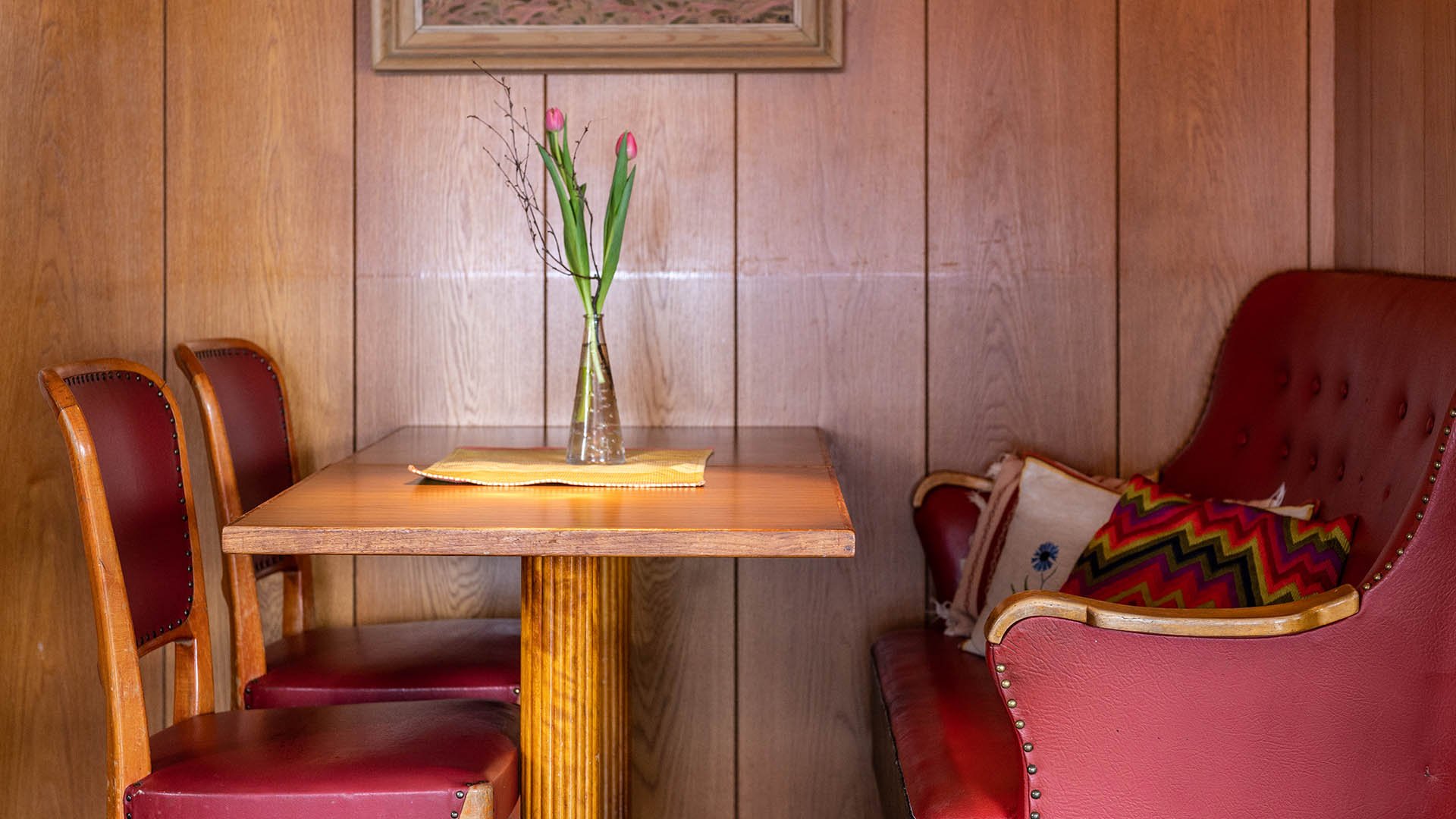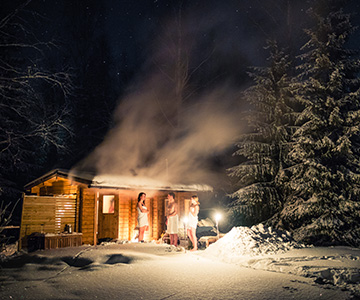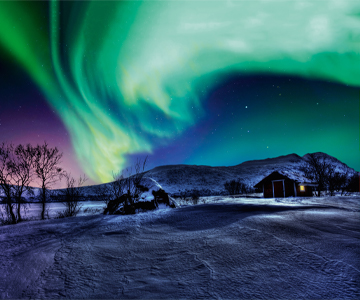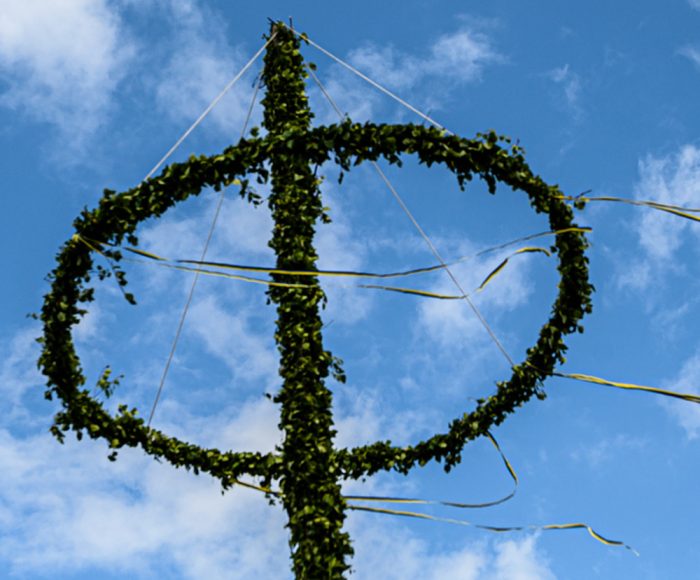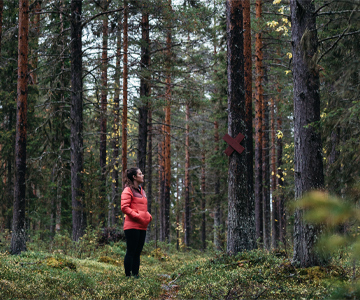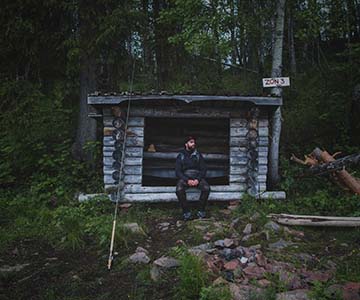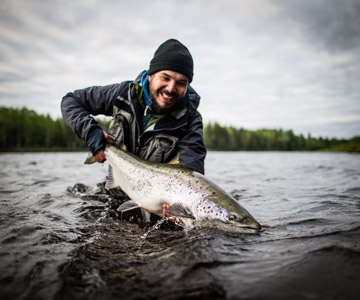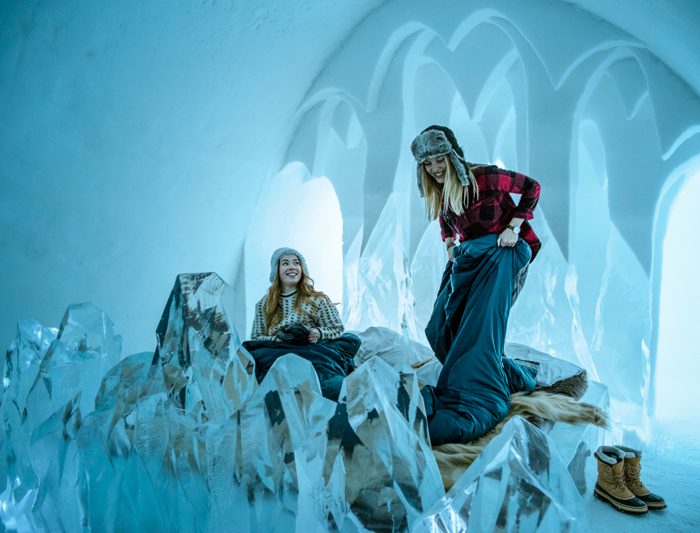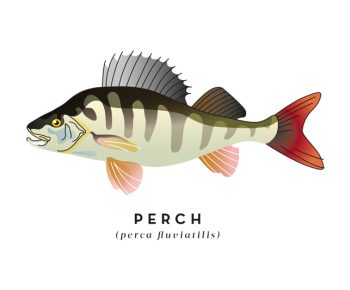In the afternoon on a perfect summer’s day in July you turn off the E10 and enter Överkalix. You’ve decided to stay for 24 hours in a place you’ve never visited. The town is located beautifully on an island where the river Ängesån meets the Kalix River. But what are you planning on doing in Överkalix during your visit?
Afternoon: The dominant impression as you enter Överkalix is the Grand Arctic Resort. A facility for those who would definitely consider the easy life of all-inclusive. At least that’s what the staff tell you when you check in. You can choose between staying at the campsite, the hotel, or the hostel (for groups), and there’s also a pool here for your 25 metre laps and a sauna down by the water. There are also SUP boards, kayaks and bikes for rent. Since you’re keen to get rid of the travel dust you decide that some stand up paddling might help.
Evening: After visiting the Kalix River in the late afternoon sun, you book dinner at the hotel. But before dinner – and because you managed to fall off your board a couple of times – you visit the sauna. In the lobby bar you drink a Pils brewed by Skellefteå Bryggeri but designed specifically for the Grand Arctic Hotel.
After dinner and, well, after another beer (this time an IPA) on the summer terrace, you decide to take a walk along the promenade. It’s beautiful. People are out on the river in boats and on jet skis. You realise the importance of the river, and you’re also aware that some of the world’s biggest salmon are swimming past right here. They’re heading towards waterfalls like Jokkfall or Linafallet, or other spawning grounds.
About Överkalix
Överkalix is a place of rich soils with rivers and creeks breaking up the landscape into islands, islets, and headlands. Get a breathtaking view over it all from Storlappberget where you also can ski downhill in the winter. Take part in the rockabilly culture and admire beautiful vintage cars at the annual cruising festival around midsummer — and listen closely for the rich Överkalix dialect, which sounds like it’s own language.
Have a chat with the local tourist information for more insights visitoverkalix.com
Curious about living in Överkalix?
Check out overkalix.se
Morning: Early bird as you are you make it to the pool – with its 27-degree water – to swim a couple of hundred metres. There’s also an outdoor gym here. After all this wellbeing you’re ready both for a hearty breakfast and a day full of experiences.
Morning: You’ve rented a bike and pick it up after breakfast. You pack your swimming gear, a windbreaker, and some water, then bike along Storgatan past Seth Engström, a classic outfitter, past Brännvalls, the archetypical café, and on the opposite side of the square there’s another well-known institution: Nettan’s Centrumkiosk. Before the day is over, you’ll have time to eat a burger meal and have some coffee and cake in town. You bike up Grelsbyberget and then down the road from Brännaberget mountain: the much-loved dance pavilion that’s now made a comeback.
Both from Grelsbyberget and Brännaberget you get a stunning view across the valley. You bike on towards the ferry station and take the car ferry across to Boheden.
Here you’re able to enjoy your first coffee of the day at Jakobsgården, also offering farm stays, a summer café, yarns and sausages for sale (from their own sheep). You take the ferry back, and since you’re on holiday perhaps it’s time for another swim. You can find natural beaches in Överkalix by the Grand Arctic Resort, for example, but also in Lansjärv, at Sanningslandets badplats, and here by the ferry dock. You take a swim in the river, and dry in the sunshine.
Afternoon: You bike back towards the Grand Arctic Hotel. You have a burger meal at Centrumkiosken as you go past. You also take a peek into Seth Engström, mostly just to see what’s hidden behind those old-fashioned display windows. Next to the clothes shop is Brännvalls. A café that was closed down for more than 15 years, but one day Katarina Samuelsson decided it should open its doors again.
The cloudberry cake served here ought to guarantee that it will always stay open. “It’s the old man who’s picked the cloudberries”, says Katarina as you order and pay. Then you bike back to the hotel, return the bike, and prepare for departure. It’s certainly a lot of hassle having to sunbathe, have coffee and enjoy the view.
Life by a waterfall
Jockfall, the waterfall on the Kalix River, is famous for its salmon fishing and impressive views. For more than 30 years the Landin family has provided first class housing, food and service here at the waterfall.
Packing up: As you leave Överkalix to tackle the E10 again you consider the fact that if you’d stayed there longer, you’d probably repeat a lot of the day and turn it into a routine. But you’d also have taken the opportunity to go on excursions. To Anna-Lena Kati and her reindeer for example, or to Arctic Moose Farm. The jumping salmon at Jokkfall and the tasty lunches there would have been another alternative, just like the bike trails in the area where Explore Jockfall provide guiding sessions. Picking your own strawberries at Polcirkelbär would have been the ideal dessert. So, even if you’re not that hungry yet you take the opportunity to turn off at one of the most famous stops in Överkalix: Vippabacken. Their salmon sandwich is rumoured to be truly tasty, so you buy one for the road. Nilles Bar & Camping is another roadside tavern, with good pizza.



